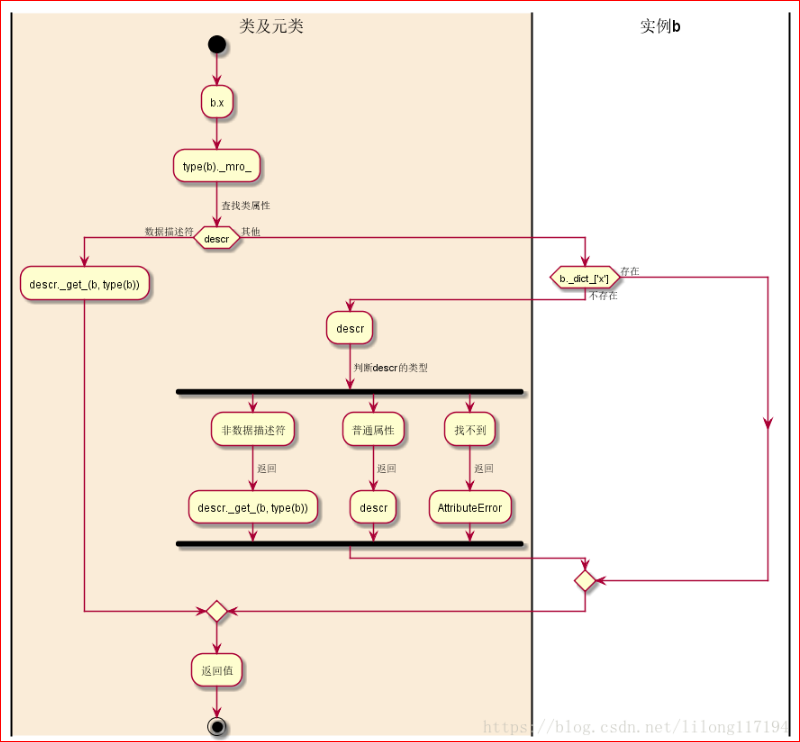- 5个带key内置函数 1.filter/map(function, iterable)-->迭代器 2.sorted(iterable[, cmp[, key[, reverse]]]) -->list 3.min/max(iterable, *[, default=obj, key=func]) -> value
CLICK ME
- max
#count函数先理解
a = [1,2,3,3,2,2,2,2]
print(a.count(2)) # 5
print(max(set(a),key=a.count)) #2
# max() 方法返回给定参数的最大值,参数可以为序列。
lis = [1,2,3,-4]
print(max(lis)) #返回lis列表中的最大值
'''结果:
3
'''
print(max(lis,key=abs)) #key参数指向绝对值函数,返回的结果是-4
- min
#(2)min
# min() 方法返回给定参数的最小值,参数可以为序列。
lis = [-1,0,1,2]
print(min(lis)) #返回lis列表中的最小值
'''结果:
-1
'''
- fileter
'''
unittest源码中
'''
def getTestCaseNames(self, testCaseClass):
"""Return a sorted sequence of method names found within testCaseClass
"""
#这里定义filter函数
def shouldIncludeMethod(attrname):
if not attrname.startswith(self.testMethodPrefix):
return False
testFunc = getattr(testCaseClass, attrname)
if not callable(testFunc):
return False
fullName = f'%s.%s.%s' % (
testCaseClass.__module__, testCaseClass.__qualname__, attrname
)
return self.testNamePatterns is None or
any(fnmatchcase(fullName, pattern) for pattern in self.testNamePatterns)
#filter 使用方法
testFnNames = list(filter(shouldIncludeMethod, dir(testCaseClass)))
#是否排序
if self.sortTestMethodsUsing:
#testFnNames是列表,sort是python3里面的列表方法
#case的排序
testFnNames.sort(key=functools.cmp_to_key(self.sortTestMethodsUsing))
return testFnNames
# filter() 函数用于过滤序列,过滤掉不符合条件的元素,返回一个迭代器对象。
# 该接收两个参数,第一个为函数,第二个为序列,序列的每个元素作为参数传递给函数进行判,然后返回 True 或 False,最后将返回
# True 的元素放到新列表中。
# 语法格式:filter(function, iterable)
#实例1
def is_odd(x):
return x % 2 == 1
print(list(filter(is_odd,[1,2,3,4,5,6,7,8,9]))) #python3中不使用list强转数据类型的话,filter返回的是迭代器
'''结果:
[1, 3, 5, 7, 9]
'''
#实例2
s = 'jason lv'
iterator = filter(lambda x : x !='a',s)
s1 = ''
for i in iterator:
s1 += str(i)
print(s1)
'''结果:
json lv
'''
- map
# map() 会根据提供的函数对指定序列做映射。
# 第一个参数 function 以参数序列中的每一个元素调用 function 函数,返回一个迭代器对象。
# 语法格式:map(function, iterable, ...)
#实例1
def pow2(x):
return x * x
lis = [1,2,3,4,5,6]
print(list(map(pow2,lis)))
'''结果:
[1, 4, 9, 16, 25, 36]
'''
#实例2
lis = [1,2,3,4,5,6]
print(list(map(lambda x : x *10 if x >3 else x / 2,lis)))
'''结果:
[0.5, 1.0, 1.5, 40, 50, 60]
'''
- sorted 注意不是Sort函数是list列表中的函数
#(5)sorted
# Sort函数是list列表中的函数,而sorted可以对list或者iterator进行排序。
# 语法格式:sorted(iterable[, cmp[, key[, reverse]]])
# 参数说明:
# (1) cmp参数
# cmp接受一个函数,拿整形举例,形式为:
# def f(a, b):
# return a - b
#
# 如果排序的元素是其他类型的,如果a逻辑小于b,函数返回负数;a逻辑等于b,函数返回0;a逻辑大于b,函数返回正数就行了
# (2)key参数
# key也是接受一个函数,不同的是,这个函数只接受一个元素, 形式如下
# def f(a):
# return len(a)
#
# key接受的函数返回值,表示此元素的权值,sort将按照权值大小进行排序
#
# (3)reverse参数
# 接受False
# 或者True
# 表示是否逆序
# 语法格式:sorted(iterable[, cmp[, key[, reverse]]])
#实例1
lis = [3,2,1,4,5,6]
print(list(sorted(lis,reverse=True)))
'''结果
[6, 5, 4, 3, 2, 1]
'''
print(list(sorted(lis))) #默认不指定reverse参数时,顺序是正序
'''结果
[1, 2, 3, 4, 5, 6]
'''
#实例2
lis = ['adf ee','zcv','qwer','a s s w']
print(list(sorted(lis,key=len)))
'''结果:
['zcv', 'qwer', 'adf ee', 'a s s w']
'''
- fileter
- map
CLICK ME
'''
unittest源码中
'''
def loadTestsFromTestCase(self, testCaseClass):
"""Return a suite of all test cases contained in testCaseClass"""
if issubclass(testCaseClass, suite.TestSuite):
raise TypeError("Test cases should not be derived from "
"TestSuite. Maybe you meant to derive from "
"TestCase?")
testCaseNames = self.getTestCaseNames(testCaseClass)
if not testCaseNames and hasattr(testCaseClass, 'runTest'):
testCaseNames = ['runTest']
#map(function, iterable) 返回迭代器
loaded_suite = self.suiteClass(map(testCaseClass, testCaseNames))
return loaded_suite
'''
其他示例
'''
# 使用 lambda 匿名函数
>>> map(lambda x: x ** 2, [1, 2, 3, 4, 5])
[1, 4, 9, 16, 25]
# 提供了两个列表,对相同位置的列表数据进行相加
>>> map(lambda x, y: x + y, [1, 3, 5, 7, 9], [2, 4, 6, 8, 10])
[3, 7, 11, 15, 19]
- 字符串切片汇总
CLICK ME
- [:-1]和[::-1]
a='python'
b=a[::-1] #nohtyp #从后往前数的话,最后一个位置为-1
c=a[::-2] #nhy
d=a[:-1] #从位置0到位置-1之前的数 #pytho
e=a[:-2] #从位置0到位置-2之前的数 #pyth
'''
b = a[i:j] 表示复制a[i]到a[j-1],以生成新的list对象
当i缺省时,默认为0,即 a[:3]相当于 a[0:3]
当j缺省时,默认为len(alist), 即a[1:]相当于a[1:10]
当i,j都缺省时,a[:]就相当于完整复制一份a
'''
'''
b = a[i:j:s]表示:i,j与上面的一样,但s表示步进,缺省为1.
所以a[i:j:1]相当于a[i:j]
当s<0时,i缺省时,默认为-1. j缺省时,默认为-len(a)-1
所以a[::-1]相当于 a[-1:-len(a)-1:-1],也就是从最后一个元素到第一个元素复制一遍,即倒序。
'''
- str/print 的一些方法
CLICK ME
print("I'm %s. I'm %d year old" % ('Vamei', 99))
name = 'Eric'
print(f'Hello, my name is {name}')
print("{1} {0} {1}".format("hello", "world") )
print("网站名:{name}, 地址 {url}".format(name="test", url="www.test.com"))
print('Press Ctrl+{0} to exit'.format('Break' if os.name == 'nt' else 'C '))
print("I'm %(name)s. I'm %(age)d year old" % {'name':'Vamei', 'age':99})
'''
HTMLTestRunner.py
'''
line = self.HEADING_ATTRIBUTE_TMPL % dict(
name = saxutils.escape(name),
value = saxutils.escape(value),
)
- python的一些std,错误Exception处理
CLICK ME
import traceback
import sys
try:
raise ValueError('this is a exp')
except Exception as ex:
ex_type, ex_val, ex_stack = sys.exc_info()
print(ex_type)
print(ex_val)
print(ex_stack)
for stack in traceback.extract_tb(ex_stack):
print(stack)
- and or 赋值相关操作
CLICK ME
优先级or要低,n > 1 and 'errorClass'中 n >1 为true 就看and 后面的 errorClass也为true 整个就是true不用看or后面的,就返回了errorClass
'''
看到HTMLTestRunner有个表达式
'''
n =2
style = n > 1 and 'errorClass' or n > 0 and 'failClass' or 'passClass'
print(style) # passClass
'''
简化版
'''
test = '' or [] or {}
print(test) # {}
- callable函数
CLICK ME
对于函数、方法、lambda 函式、 类以及实现了 _call_ 方法的类实例, 它都返回 True。
>>>callable(0)
False
>>> callable("runoob")
False
>>> def add(a, b):
... return a + b
...
>>> callable(add) # 函数返回 True
True
>>> class A: # 类
... def method(self):
... return 0
...
>>> callable(A) # 类返回 True
True
>>> a = A()
>>> callable(a) # 没有实现 __call__, 返回 False
False
>>> class B:
... def __call__(self):
... return 0
...
>>> callable(B)
True
>>> b = B()
>>> callable(b) # 实现 __call__, 返回 True
True
- 双下"_ _"方法汇总一下
CLICK ME
- 基础
- getattr/setattr/delattr、getattribute

定义了__getattr__(),当访问object不存在的属性时会调用该方法
不定义访问不存在的属性时会报 AttributeError
进阶:
'''
runner.py
'''
#这样定义过后原来的属性调用和返回值的调用方式一致,增加了换行功能
self.stream = _WritelnDecorator(stream)
class _WritelnDecorator(object):
"""Used to decorate file-like objects with a handy 'writeln' method"""
def __init__(self,stream):
self.stream = stream
def __getattr__(self, attr):
if attr in ('stream', '__getstate__'):
raise AttributeError(attr)
return getattr(self.stream,attr)
def writeln(self, arg=None):
if arg:
self.write(arg)
self.write('
') # text-mode streams translate to
if needed
- getiterm/setiterm/deliterm/
- new/init
- dict/str/repr
class Animal(object):
run = True
class Dog(Animal):
fly = False
def __init__(self, age):
self.age = age
def sound(self):
return "wang wang~"
# 实例化一个对象dog
dog = Dog(1)
# 查看dog对象的属性
print ('dog.__dict__:',dog.__dict__)
# 查看类Dog的属性
print ('Dog.__dict__:',Dog.__dict__)
# 查看类Animal的属性
print ('Animal.__dict__:',Animal.__dict__)
#结果 (和dir区别)
#属性在哪个对象上定义,便会出现在哪个对象的__dict__中
dog.__dict__: {'age': 1}
Dog.__dict__: {'__doc__': None, 'fly': False, '__module__': '__main__', '__init__': <function Dog.__init__ at 0x00000220DB9CB400>, 'sound': <function Dog.sound at 0x00000220DDE4FC80>}
Animal.__dict__: {'run': True, '__dict__': <attribute '__dict__' of 'Animal' objects>, '__module__': '__main__', '__weakref__': <attribute '__weakref__' of 'Animal' objects>, '__doc__': None}
- name/qualname
- class
class Person(object):
pass
p= Person()
print(p.__class__)
print(Person.__class__)
- 进阶
- add/sub
- _import_
- _mro_/slot/
get(),set(),delete()
https://www.cnblogs.com/andy1031/p/10923834.html
拥有这个方法的类,应该(也可以说是必须)产生一个实例,并且这个实例是另外一个类的类属性(注意一定是类属性,通过self的方式产生就不属于__get__范畴了)。
也就是说拥有这个方法的类,那么它的实例应该属于另外一个类/对象的一个属性。
非资料描述器,也就是只有__get__,不管是类还是实例去访问,默认都获得的是__get__的返回值,但是,如果中间有任何一次重新赋值,那么,这个实例获得的是新的值(对象),已经和原来的描述器完全脱离了关系
资料描述器,比如有__set__方法,后期通过实例对描述器进行赋值,那么访问的是__set__,并且永远关联起来。但是如果通过修改类属性的方式复制,那么也会被重新获取新的值(对象)。
# __get__ 的使用
class TestDes:
def __get__(self, instance, owner):
print(instance, owner)
return 'TestDes:__get__'
class TestMain:
des = TestDes()
if __name__ == '__main__':
t = TestMain()
print(t.des)
print(TestMain.des)
# __get__ __set__ 的使用
class TestDes:
def __get__(self, instance, owner):
print('TestDes:__get__:', instance, owner)
return 'TestDes:__get__return'
def __set__(self, instance, value):
print('TestDes:__set__:', instance, value)
class TestMain:
des = TestDes()
if __name__ == '__main__':
t = TestMain()
print(t.des)
print(TestMain.des)
print('*************************')
t.des = 1
print(t.des)
print(TestMain.des)
print('*************************')
TestMain.des = 1
print(t.des)
print(TestMain.des)
'''
TestDes:__get__: <__main__.TestMain object at 0x06C04C70> <class '__main__.TestMain'>
TestDes:__get__return
TestDes:__get__: None <class '__main__.TestMain'>
TestDes:__get__return
*************************
TestDes:__set__: <__main__.TestMain object at 0x06C04C70> 1
TestDes:__get__: <__main__.TestMain object at 0x06C04C70> <class '__main__.TestMain'>
TestDes:__get__return
TestDes:__get__: None <class '__main__.TestMain'>
TestDes:__get__return
*************************
1
1
'''
#描述符Str
class Str:
def __get__(self, instance, owner):
print('Str调用')
def __set__(self, instance, value):
print('Str设置...')
def __delete__(self, instance):
print('Str删除...')
#描述符Int
class Int:
def __get__(self, instance, owner):
print('Int调用')
def __set__(self, instance, value):
print('Int设置...')
def __delete__(self, instance):
print('Int删除...')
class People:
name=Str()
age=Int()
def __init__(self,name,age): #name被Str类代理,age被Int类代理,
self.name=name
self.age=age
#何地?:定义成另外一个类的类属性
#何时?:且看下列演示
p1=People('alex',18)
#描述符Str的使用
p1.name
p1.name='egon'
del p1.name
#描述符Int的使用
p1.age
p1.age=18
del p1.age
#我们来瞅瞅到底发生了什么
print(p1.__dict__)
print(People.__dict__)
#补充
print(type(p1) == People) #type(obj)其实是查看obj是由哪个类实例化来的
print(type(p1).__dict__ == People.__dict__)
- 高级
- call
- iter
- enter/exit
- metaclass
- next、iter的应用
CLICK ME
next、iter组合起来的用发
1.
def test(context=False, **kwargs):
k, v = next(iter(kwargs.items()))
print(k,v) # 可以获取到第一参数的kv值
k,v ,g= kwargs.items() # kwargs 传入3个这里就要写3个了。。。
print(k[0],k[1])
- property
CLICK ME
title
1 class Foo:
2 def get_AAA(self):
3 print('get的时候运行我啊')
4
5 def set_AAA(self,value):
6 print('set的时候运行我啊')
7
8 def delete_AAA(self):
9 print('delete的时候运行我啊')
10 AAA=property(get_AAA,set_AAA,delete_AAA) #内置property三个参数与get,set,delete一一对应
11
12 f1=Foo()
13 f1.AAA
14 f1.AAA='aaa'
15 del f1.AAA
- dir
CLICK ME
不太理解为啥叫dir

- python的os操作
CLICK ME
title
- things
CLICK ME
title
- things
CLICK ME
title